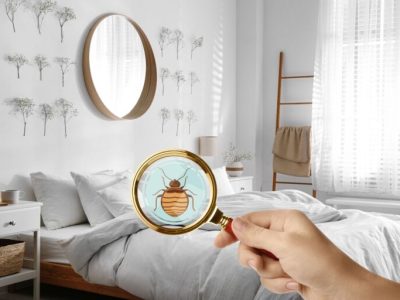Integrated Pest Management (IPM) is a comprehensive approach to pest control that combines various management strategies and practices to reduce the risks associated with pests. This method aims to minimize the use of chemical pesticides and promote sustainable and environmentally friendly practices. IPM is widely used by professionals, including those at https://saelapest.com/, to ensure effective and safe pest management.
What is Integrated Pest Management?
Integrated Pest Management is a multifaceted approach that involves the integration of several techniques to control pests effectively. The primary goal of IPM is to manage pest populations at acceptable levels while minimizing the impact on the environment, non-target organisms, and human health. This approach relies on understanding the biology and behavior of pests, monitoring pest populations, and using a combination of control methods to achieve long-term pest management.

Key Components of IPM
-
Pest Identification and Monitoring
- Accurate identification of pests is crucial in IPM. Misidentifying pests can lead to ineffective control measures. Regular monitoring helps in understanding pest populations and their activity patterns.
-
Preventive Measures
- Prevention is a core component of IPM. By eliminating potential food, water, and shelter sources, pests can be deterred from entering homes and businesses. Examples include sealing cracks, proper waste management, and maintaining clean environments.
-
Biological Control
- This involves the use of natural predators, parasites, or pathogens to control pest populations. For instance, introducing ladybugs to control aphids is a common biological control method.
-
Cultural Control
- Cultural practices, such as crop rotation, planting pest-resistant varieties, and proper landscaping, can reduce the habitat and food sources for pests.
-
Mechanical and Physical Control
- Methods like traps, barriers, and physical removal of pests are part of mechanical and physical controls. These techniques are often used to reduce pest numbers without chemicals.
-
Chemical Control
- While IPM aims to minimize chemical use, pesticides may be used when necessary. The choice of pesticides and application methods are carefully considered to target pests effectively while reducing harm to non-target organisms.
Benefits of Integrated Pest Management
-
Environmental Protection
- By reducing reliance on chemical pesticides, IPM helps protect the environment from pollution and the adverse effects of pesticides on non-target species.
-
Human Health
- Minimizing pesticide use reduces the risk of exposure to harmful chemicals for humans, especially in residential and agricultural settings.
-
Sustainable Pest Control
- IPM promotes long-term pest control solutions that are sustainable and reduce the likelihood of pest resistance to control measures.
-
Cost-Effective
- Implementing IPM can be cost-effective in the long run, as it focuses on prevention and uses targeted control methods, reducing the need for frequent chemical treatments.
Implementing IPM in Colorado City
Colorado City pest control companies often incorporate IPM principles into their services to provide effective and eco-friendly pest management solutions. These companies emphasize understanding the local pest species and their behaviors to tailor IPM strategies effectively. For example, identifying the specific pests that are prevalent in Colorado City, such as termites, ants, and rodents, allows for the development of targeted IPM plans.
Regular monitoring and inspections are essential in Colorado City to identify potential pest issues early. Colorado City pest control companies may use a variety of monitoring tools, such as pheromone traps for insects and bait stations for rodents, to track pest activity.
Preventive measures are also a significant part of IPM in Colorado City. Ensuring proper sanitation, sealing entry points, and managing outdoor vegetation can help prevent pests from becoming a problem in the first place.
Biological controls are sometimes used by Colorado City pest control companies to manage pests naturally. For example, using beneficial nematodes to control soil-dwelling pests or introducing predatory insects to reduce pest populations can be effective strategies.
When chemical control is necessary, Kansas City pest control companies select the least toxic options and apply them in a targeted manner to minimize environmental impact. They also educate their clients on the importance of IPM and how they can contribute to pest prevention in their homes and businesses.
Conclusion
Integrated Pest Management is a holistic approach to pest control that emphasizes prevention, monitoring, and the use of multiple control methods to achieve effective and sustainable pest management. By understanding and implementing IPM principles, Colorado City pest control companies can provide safer and more environmentally friendly solutions for managing pest problems. Whether dealing with residential or commercial properties, IPM offers a balanced approach that protects both people and the environment.








Comments